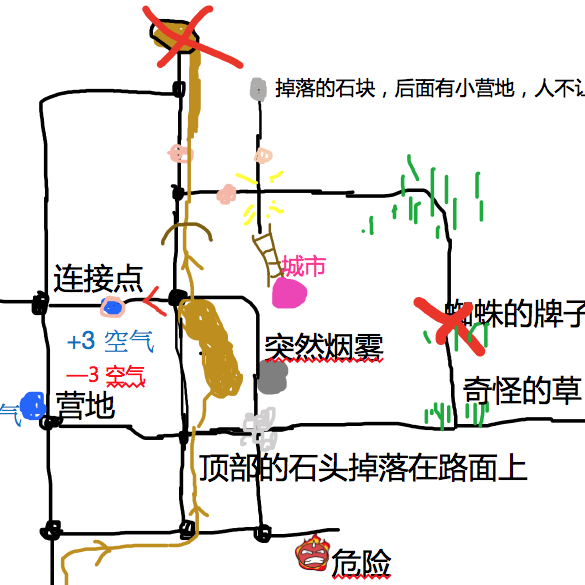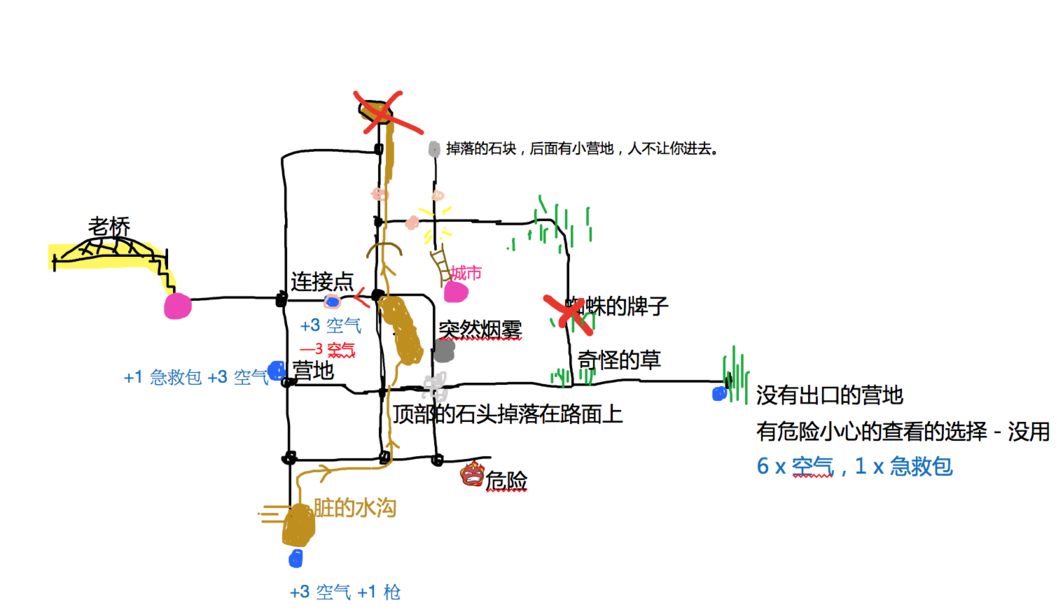How to WordSwing
The pedagogical value of mapping your adventure


The pedagogical value of mapping your adventure
Our text adventure games often involve exploring a world described in Chinese. Remembering where you've been and how to get around can get tricky, particularly given we (intentionally) don't provide a map. But there's nothing to stop you from drawing your own. And indeed we highly recommend this!
Tracking your progress in the WordSwing iOS app


Tracking your progress in the WordSwing iOS app
Track your learning progress in WordSwing's iOS app while you practice Chinese.
Incremental character learning through games


Incremental character learning through games
Strategically learning characters in preparation for a text game can ensure you recognize a very high percent of the text.
Turn an adventure game into speaking fluency practice


Turn an adventure game into speaking fluency practice
A strategy for using WordSwing's text adventure games for Chinese speaking fluency practice.
Level up your language learning habits


Level up your language learning habits
Whether you are successful in your language-learning pursuits is heavily influenced by whether you're able to stick with it or not. So we've built some (slightly) gamified tools for helping you build your Chinese learning habits.
The magic of learning Chinese through games


The magic of learning Chinese through games
There is something magical about learning through games. Why is it so effective?
Into the Haze is not as hard as you think
Our text adventure games work like a interactive, graded readers But when you first dive into a game, you may find it looks like wall of Chinese, and perhaps a bit overwhelming. But all is not lost! The games reuse so many characters that after a bit of play and some effort you will start to feel much more comfortable and capable.
Chinese listening through adventure games
Listening comprehension is one of the most important skills when learning a language. With the audio available for our text adventure games, you not only get excellent listening practice, but you'll know how well you're understanding things based on whether you can make progress in the game and avoid mishaps.
How does the Written Word SRS character-learning gadget work?
Our Written Word spaced-repetition character learning gadget is designed to leverage the combinatorial structure of Chinese as well as the distribution of word frequencies to optimize your learning and save you a boat load time and effort.
Following language through the stages of learning


Following language through the stages of learning
Learning a new word generally seems to follow a typical progression. First you notice a new word, then after you've encountered it a few times, it starts to feel familiar. And after actively trying to use it in the wild a few times, it joins the other words you feel you've mastered. At WordSwing, we make this process explicit with learn stage levels.
Learning Chinese characters, the most common first
With thousands of Chinese characters to master, it can be daunting to get going and plough through them. But an efficient strategy can make a big difference. In our Written Word SRS activity, you can learn characters in frequency order while practicing them using words composed by these characters.
Help direct our development


Help direct our development
One of the fun challenges at WordSwing is that we have a mile-long development to-do list. But rather than let our (perhaps misguided whim) dictate what gets done when, we want to involve our students in the process.
What does knowing 575 characters mean?


What does knowing 575 characters mean?
There are thousands of Chinese characters. Suppose you know 575 characters, how should you think about this?
Why is WordSwing named WordSwing?
The name WordSwing is part of a metaphor for language learning. The words you learn are vines hanging in the jungle that you can use to swing to new vines (words), and thereby traverse the landscape (language-scape), in a fun, exhilarating, and effective way.
Ever wonder how many characters you know?
Using a little gadget over at WordSwing we can help you estimate how many characters you know by asking you about a small sample.